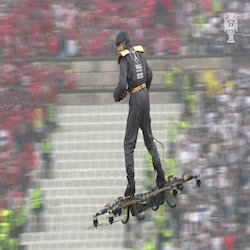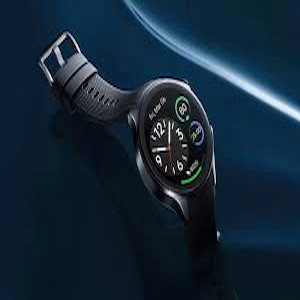Before Sunday’s Portuguese Cup Final between Benfica and Vitoria SC, a guy rode a propeller-powered Omni Hoverboard into the air rather than just strolling over to throw the ball to the officials.
The man riding a hoverboard at Estádio Nacional is seen in the video gliding over photographers and security guards with great ease before landing on the other side of the field.
The Hoverboard, From Sci-Fi to Reality
Originally depicted in science fiction, the hoverboard is a levitating board used for personal transportation. It gained notoriety after a skateboard-like hoverboard appeared in the movie Back to the Future Part II. There have been several efforts to create a functional hoverboard.
The Hover Board History
Author M. K. Joseph originally mentioned hoverboards in a science fiction book published in 1967. The shoot-’em-up arcade video game SWAT, created by Coreland and released by Sega in Japan and Bally Midway in North America, included a hoverboard in 1984.
With its debut in Back to the Future Part II (1989), the hoverboard gained popularity thanks to the Back to the Future movie series. In the 1990s, there were rumors—stoked by the film’s director, Robert Zemeckis—that hoverboards existed but weren’t sold because parent organizations thought they were too risky. The veracity of these rumors has been established.
READ ALSO: Incendiary Devices: The Inferno Triggers
Prototypes
The Canadian inventor Cătălin Alexandru Duru, who was born in Romania, set a new record for continuous travel as a controlling pilot on an autonomously powered hoverboard in May 2015, when Guinness World Records announced that he had flown over Lake Ouareau in the province of Quebec, Canada, for 275.9 meters (302 yards) at heights of up to 5 meters (16 feet). The flight culminating in a controlled splash-down is shown on video.[12] Over the course of a year, Duru had created the hoverboard himself. Propellers provide the lift, and the pilot uses his feet to steer the ship.
Zapata’s Hoverboard
During France’s Bastille Day celebrations in July 2019, Franky Zapata piloted the Flyboard Air, a more recent “jet-powered personal aerial vehicle” known as the EZ-Fly. Zapata successfully crossed the English Channel using his gadget on August 4, 2019. The first effort on July 25 had failed, but on the second attempt, he completed the 35-kilometer (22-mile) route in roughly 20 minutes, including a midway fuel break, while being accompanied by French Army helicopters and utilizing a backpack gasoline reservoir. Zapata maintained a height of around 15 meters (50 feet) while reaching a speed of 180 km/h (110 mph).
A Leap to 2023
On March 22, 2023, French hobbyist Damien Dolata posted the Ripulse, his first working hoverboard, on YouTube. A person up to around 30 kg in weight may be levitated above the ground with this hoverboard. It is made up of four magneto-rotational repulsors that cause a conductive surface to eddy with current.
How Does The Hoverboard Work?
With the help of the inbuilt gyroscope, the hoverboard advances according to your center of gravity. The gyroscope on the hoverboard is used to change the board’s tilt in order to keep balance. A microprocessor is another feature of hoverboards that regulates the power sent to the wheels. A hoverboard’s wheels are powered by a motor, which keeps the rider balanced and upright. The primary electrical power source for hoverboards is high-lithium batteries.



